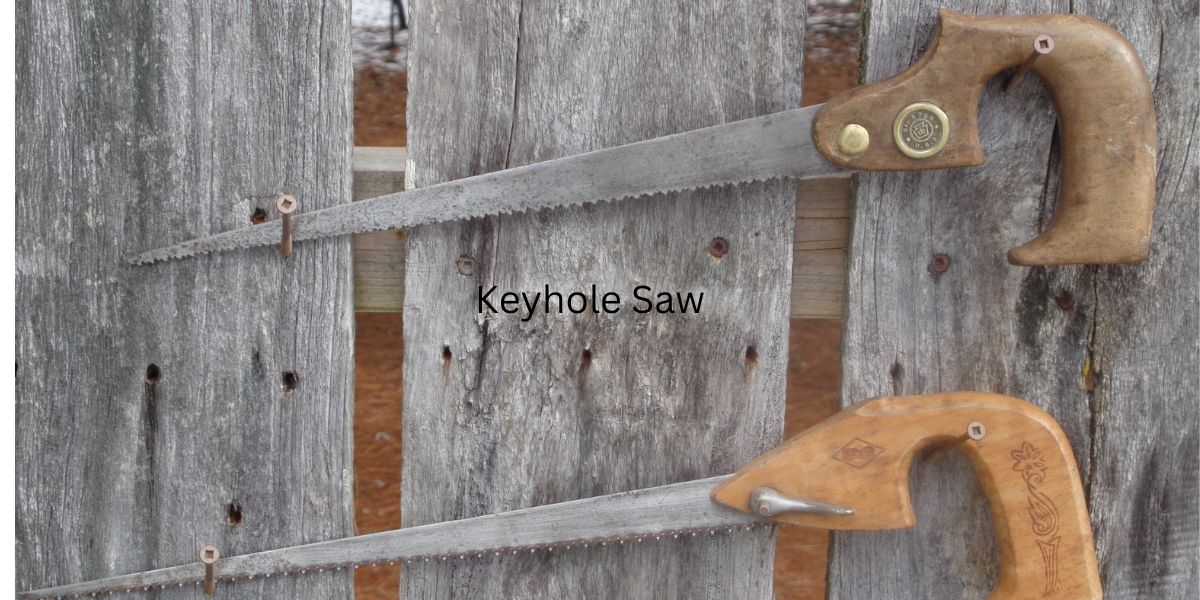This is a about the use and the application of a keyhole saw for drywall work, and will mention a few that cut very well and will not create as much dust as an electrical tool.
Unlocking Precision: The Keyhole Saw for Drywall
When it comes to precision cuts in drywall installation or renovation projects, the keyhole saw stands as an unsung hero in the toolkit of many professionals and DIY enthusiasts. Its unassuming appearance hides its incredible versatility and effectiveness in creating clean, accurate openings. If you are doing holes for electrical boxes, or any holes needed for plumbing in drywall then this is the tool to reach for.
Design and Purpose
A keyhole saw, characterized by its narrow, pointed blade with fine teeth, derives its name from its ability to cut small, intricate keyhole-shaped openings. However, its functionality extends beyond mere keyholes. The saw’s design enables it to navigate tight spaces and intricate patterns, making it ideal for various cutting tasks in drywall, including shaping holes for electrical boxes, creating openings for pipes, or trimming edges with precision. These saws are usually 6 to 12inches long, with the longer lengths being more efficient when cutting, and with some the cutting blade will fold into the handle.
Versatility in Application
One of the key advantages of the keyhole saw lies in its adaptability to different situations. Its small size and maneuverability make it perfect for intricate and detailed work where larger tools would struggle. Whether you’re dealing with an irregular shape, need to cut around corners, or require a neat finish in an inaccessible area, the keyhole saw proves its worth.
Blade Points
If you are doing work on drywall for electrical boxes or plumbing pipes it is best to have a blade with a sharp point on the end, so you can easily penetrate the material and start cutting.
Technique and Tips
Using a keyhole saw efficiently involves the right technique. Begin by marking the area to be cut accurately. Then, gently start the blade by piercing the drywall surface and proceed with a steady, controlled motion. It’s crucial to maintain a light touch, allowing the teeth to do the work without applying excessive force. To cut straight lines, consider using a guide or a straight edge for added precision.
Some Drywall Keyhole Saws:
Goldblatt
This saw is 113/4 inches long with the blade being 5 inches, and which folds into the handle for easy carrying.It has 8 teeth per inch on a high carbon steel blade, and is designed to cut on the push and pull stroke giving a very smooth and easy cut. The tip on the blade has also been sharpened to a point for easy penetration of drywall. The handle is designed for non-slippage and does give a very comfortable grip.
Klein Tools
The Klein saw has a 6 inch blade made from carbon steel. The teeth on this saw are also designed to cut both ways- on the push and pull, which will make for a faster cut. The end of the handle is flat so you can push the tip of the blade through the drywall very easily, and it has a rubberized cushion grip for comfort and non-slippage. Also you should know that this saw blade does not fold into the handle for carrying, but does not take away the fact that it is an excellent keyhole saw for your drywall work, and like most of these saws the price range is 20 to 25 dollars.
Ranshou
This is a Japanese double edge keyhole saw that is excellent for using on drywall, plywood, wood, or any other woodworking projects One side of the blade has course teeth with 14 teeth per inch, and the other side with fine teeth at 18 teeth per inch. The blade is made with Japanese carbon steel, and has very sharp teeth from being sharpened with an ultra-fine diamond grinding stone. The handle is wood, and easy to grip making this keyhole saw an excellent addition to your tools.
Stanley Fatmax
This drywall saw has a 6 inch blade and a sharpened tip to punch through drywall easily. It has induction hardened teeth that will stay sharp 5 time longer then the standard teeth, plus it is designed to cut on both the push and pull strokes. The handle is slip resistant and makes for a comfortable grip. For less then 20 dollars it makes for a good addition to your tools, and the Stanley brand of tools has been around for a long time with being well known for quality.
Different Brands
There are many other excellent brands of keyhole saws on the market to chose from, so I hope the information about the 3 above will give you a better knowledge to chose one for your work projects around the home.
Safety Measures
As with any cutting tool, safety is paramount. Protective eyewear is essential to shield your eyes from debris. Additionally, exercise caution when handling the saw, especially in confined spaces, to prevent accidental slips or injuries.
Conclusion
In the realm of drywall work, the unassuming keyhole saw emerges as a reliable and indispensable tool for achieving precision and finesse. Its ability to navigate intricate spaces and create clean cuts makes it a favorite among craftsmen and DIY enthusiasts alike. When finesse and accuracy matter, count on the unassuming yet mighty keyhole saw to unlock the potential of your drywall projects.
